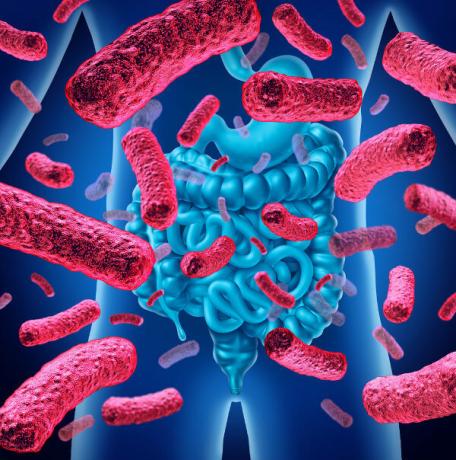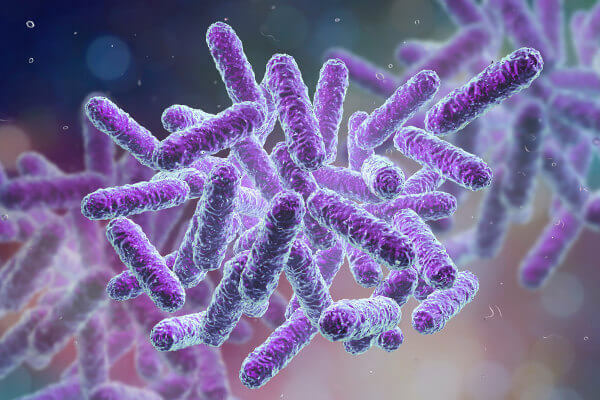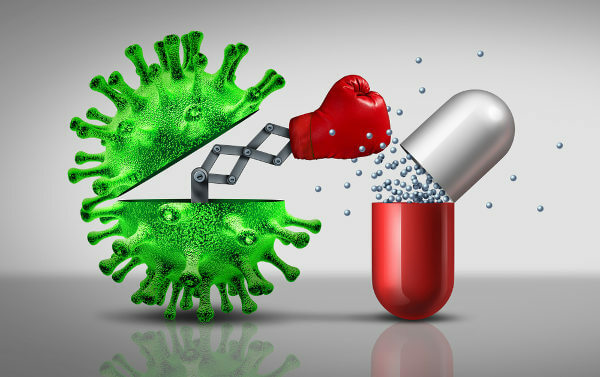Diseases caused by bacteria are relatively common and can even cause death if not properly treated.. Bacteria are estimated to cause about half of all human illnesses. Next, we will learn a little about bacterial diseases, their symptoms, treatments and prevention methods.
→ List of diseases caused by bacteria
Here are 10 diseases caused by bacteria:
Botulism: caused by bacteria Clostridium botulinum.
Cholera: caused by bacteria Vibrio cholerae.
Rocky Mountain spotted fever: is caused by bacteria rickettsia rickettsii.
Gonorrhea: sexually transmitted disease caused by Neisseria gonorrhoeae.
leprosy: caused by Mycobacterium leprae.
leptospirosis: caused by bacteria Leptospira interrogans.
Pneumonia bacterial: one of the etiological agents of bacterial pneumonia is Streptococcus pneumoniae.
Syphilis: The etiologic agent of syphilis is the bacteria Treponema pallidum.
Tetanus: Clostridium tetani it is the etiological agent of tetanus.
Tuberculosis: The bacteria causing tuberculosis is the Mycobacterium tuberculosis.
*Etiological agent is the name given to the causative agent of a disease.

Some bacteria affect the human intestine, causing diarrhea.
→ Disease causing bacteria
Bacteria are organisms formed by a single cell (unicellular), which is characterized by the absence of a defined nucleus (prokaryotes). The cellular organization of these beings is quite simple, with no membranous organelles being observed. Bacteria can be found in isolation or forming colonies.
Bacteria are found in various environments, such as water, soil and even living things. They are very useful for human beings, with ecological, industrial and even medical importance. However, many also cause illness.
Read too: Importance of bacteria for the maintenance of life
Do not stop now... There's more after the advertising ;)
Bacteria generally cause disease through the production of toxins, which can be endotoxins or exotoxins.
Endotoxins: they are located on the outer membrane of some bacteria. These bacteria release endotoxins only when they die and their cell walls come apart. As an example of bacteria that have this type of toxin, we can mention the salmonella typhi, responsible for causing typhoid fever.
Exotoxins: they are produced and secreted by bacteria. An example of a bacterium that produces this type of toxin is the Vibrio cholerae, responsible for causing cholera.
→ Symptoms of illnesses caused by bacteria
The symptoms of bacterial diseases are varied and depend on the bacteria causing the disease. Below we will show some common symptoms in bacterial diseases and also which disease the symptom is related to.

The symptom of a bacteriosis depends on the causing bacteria.
Fever: a common symptom in many diseases, not just bacterial ones. Examples of bacterial diseases that cause fever are spotted fever, tuberculosis and whooping cough.
Cough: some bacterial diseases cause coughing, such as whooping cough, tuberculosis and pneumonia.
Diarrhea: examples of bacterial diseases that can cause diarrhea are cholera and dysentery. At this point, it is important to highlight that about 2 million people die annually due to diarrheal diseases caused by bacteria.
Vomiting: they can be triggered by various bacterial diseases, such as cholera and dysentery.
muscle spasms: Tetanus is a disease that can cause severe muscle spasms.
Skin lesions with altered sensitivity: leprosy is a bacterial disease that causes decreased sensitivity.
Burning when urinating: urinary infections can trigger burning when urinating. Furthermore, gonorrhea is also responsible for causing this symptom.
→ Treatment of bacterial diseases
Most bacterial diseases are treated with the use of antibiotics, substances that work by killing or preventing bacteria from multiplying. Although the emergence of antibiotics has changed the course of medicine and saved many lives, if not used correctly, these drugs can be responsible for selecting resistant bacteria.
The biggest problem lies in the fact that many people stop treatment when they feel better, not using the antibiotic long enough. Initially, the antibiotic kills the most fragile bacteria and, with time of use, it manages to eliminate the most resistant ones. If the antibiotic is stopped, resistant bacteria multiply and cause symptoms to return.

Improper use of antibiotics can cause selection of resistant bacteria.
To avoid this problem, it is essential to uuse antibiotics only with a doctor's recommendation and comply with the times and time of treatment. In addition, it is essential store the antibiotic in an appropriate place and do not use the drug after its expiration date.
Read too:Resistance of bacteria to antibiotics
→ Prevention of bacterial diseases
Bacterial diseases can be acquired in different ways. Some pathologies are transmitted by bacteria present in water; others, by bacteria present in food, in the air, and even through sexual intercourse. We also have those transmitted by other organisms, such as fleas and ticks.
Faced with so many forms of transmission, several actions must be taken to avoid contamination by pathogenic bacteria. The forms of prevention are:
Drink only filtered and treated water;
Always wash food well;
Always wash your hands;
Use a condom in all sexual relations;
Treat the sick;
Get vaccinated.
→ Exercises on illnesses caused by bacteria
Question 1:
|
(FaZU) Are caused by bacteria: a) tuberculosis, syphilis, polio b) leprosy, tetanus, syphilis c) pneumonia, herpes, typhoid fever d) cholera, brucellosis, AIDS e) flu, measles, leptospirosis |
Reply:
The correct answer is the letter B. Polio, herpes, AIDS, flu and measles are diseases caused by viruses.
Question 2:
|
(Uema) “He was without reaction, all soft, with big and open eyes. He didn't express feelings and when we asked him where it hurt, he very slowly put his hand on his head”. Media News. 13 sept. 2011 (adapted). This was the description for an employee victim of type C meningitis after the outbreak was confirmed in the hotel complex in Costa de Sauípe (BA). Meningococcal meningitis is a bacterial infection in the membranes that line the central nervous system, having as etiologic agent and mode of transmission, respectively: The) Clostridium botulinum and inhalation of airborne droplets released by infected persons. B) Bordetella pertussis and inhalation of oral and nasal secretions from infected people. ç) Neisseria meningitidis and ingestion of contaminated water and food. d) Neisseria meningitidis and inhalation of oral and nasal secretions from infected people. and) Bordetella pertussis and ingestion of contaminated water and food. |
Reply:
The correct answer is the letter d. The etiologic agent of meningococcal meningitis is the bacteria Neisseria meningitidis. This bacteria is transmitted through the air and saliva contaminated by the bacteria.
By Ma. Vanessa Sardinha dos Santos
B) ( ) Fungi of the Penicillium genus secrete an antibiotic substance called penicillin.
C) ( ) Rickettsiae and chlamydia, despite being obligate intracellular parasites, are classified as bacteria.
D) ( ) Murine typhus and epidemic typhus are diseases caused by rickettsiae.
Among the groups of diseases mentioned below, mark the alternative in which they are all sexually transmitted and also caused by bacteria.
A) Cancer soft, diphtheria, gonorrhea.
B) Chlamydia, candidiasis, syphilis.
C) Soft cancer, syphilis, gonorrhea.

